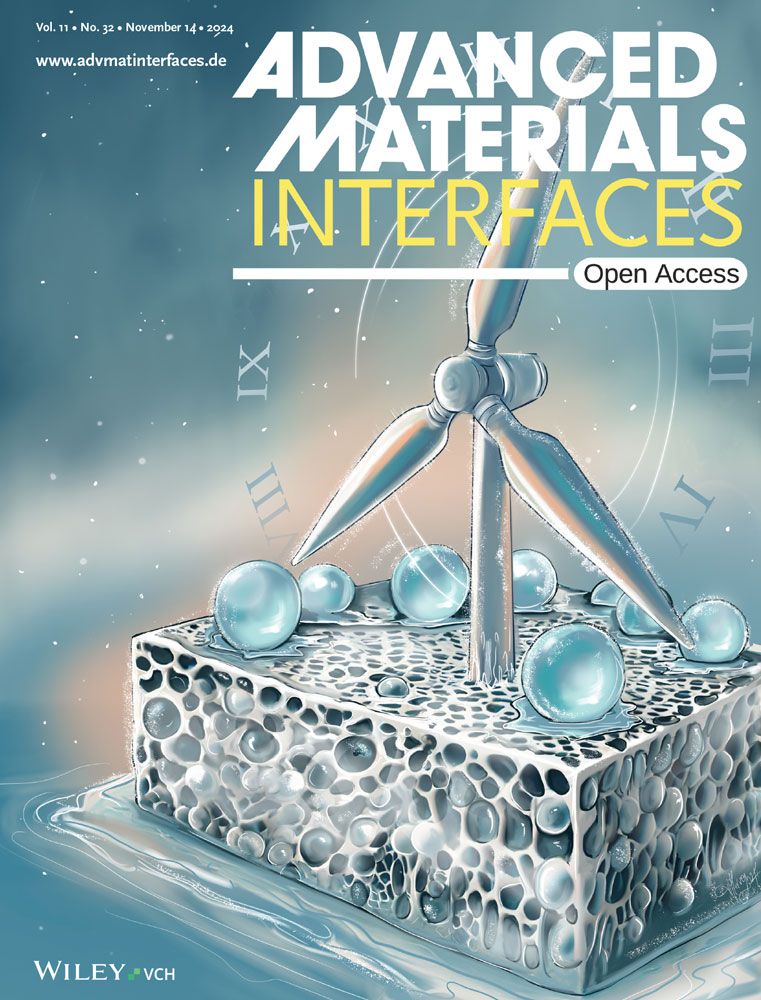石墨烯修饰Mo3S7簇传感CO2(Adv)板牙。接口36/2024)
IF 4.3
3区 材料科学
Q2 CHEMISTRY, MULTIDISCIPLINARY
引用次数: 0
摘要
本文介绍了基于石墨烯支撑的三核硫化钼簇纳米杂化材料的研制及其在有毒有害气体分子检测中的应用。优异的CO2传感性能使这些材料有望成为新一代钼电阻式空气质量控制询问器。更多细节可以在Juan Casanova-Chafer, edward Llobet和Marta Feliz的文章2400590中找到。本文章由计算机程序翻译,如有差异,请以英文原文为准。

Graphene Decorated With Mo3S7 Clusters for Sensing CO2 (Adv. Mater. Interfaces 36/2024)
Metal Cluster-Based Chemical Sensor
The development of a nanohybrid based on trinuclear molybdenum sulfido clusters supported onto graphene and its application to detect toxic and harmful gaseous molecules is described. The outstanding sensing performance toward CO2 makes these materials promising for a new generation of molybdenum resistive interrogators for the control of air quality. More details can be found in article 2400590 by Juan Casanova-Chafer, Eduard Llobet, and Marta Feliz.
求助全文
通过发布文献求助,成功后即可免费获取论文全文。
去求助
来源期刊

Advanced Materials Interfaces
CHEMISTRY, MULTIDISCIPLINARY-MATERIALS SCIENCE, MULTIDISCIPLINARY
CiteScore
8.40
自引率
5.60%
发文量
1174
审稿时长
1.3 months
期刊介绍:
Advanced Materials Interfaces publishes top-level research on interface technologies and effects. Considering any interface formed between solids, liquids, and gases, the journal ensures an interdisciplinary blend of physics, chemistry, materials science, and life sciences. Advanced Materials Interfaces was launched in 2014 and received an Impact Factor of 4.834 in 2018.
The scope of Advanced Materials Interfaces is dedicated to interfaces and surfaces that play an essential role in virtually all materials and devices. Physics, chemistry, materials science and life sciences blend to encourage new, cross-pollinating ideas, which will drive forward our understanding of the processes at the interface.
Advanced Materials Interfaces covers all topics in interface-related research:
Oil / water separation,
Applications of nanostructured materials,
2D materials and heterostructures,
Surfaces and interfaces in organic electronic devices,
Catalysis and membranes,
Self-assembly and nanopatterned surfaces,
Composite and coating materials,
Biointerfaces for technical and medical applications.
Advanced Materials Interfaces provides a forum for topics on surface and interface science with a wide choice of formats: Reviews, Full Papers, and Communications, as well as Progress Reports and Research News.
 求助内容:
求助内容: 应助结果提醒方式:
应助结果提醒方式:


